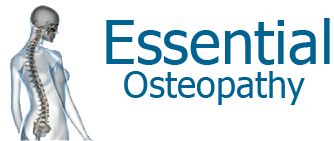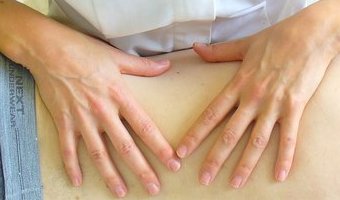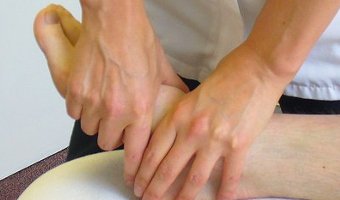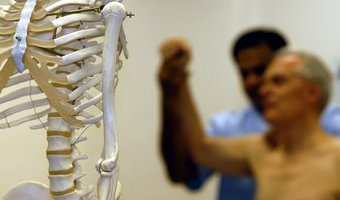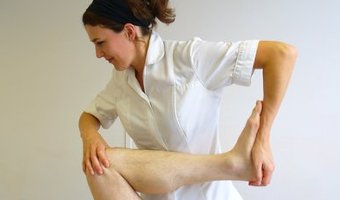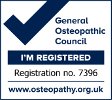The causes and treatment of thoracic, chest & rib pain
Mid back, chest and rib pain can be alarming but is most often caused by poor posture, for example, from working at a laptop or a computer for prolonged periods. It is often linked to reduced movement of the thoracic spine (back) and the ribs as they are then unable to freely move. This can sometimes create a cracking noise – nothing to worry about however it often indicates that the area is restrictive and tight and needs treating. Occasionally, there can be spasming of the intercostal muscles between the ribs which can create pain all around the side of the ribcage or chest.
Mid back pain can also be associated with what we call ‘viscero-somatic’ pain. Firstly, to explain the difference between somatic and visceral pain:
- Somatic pain – is caused by the stimulation of pain receptors in the musculo-skeletal tissues of the body. It is usually described as dull or aching and is commonly related to chronic abnormalities such as inflammation, repetitive trauma, excessive activity, vigorous stretching and contractions due to inactivity and misuse. It is usually aggravated by activity and relieved by rest.
- Visceral pain – is the pain felt when our internal organs are injured or damaged. Viscera refers to the internal areas of the body enclosed in a cavity (essentially they are the organs of the body). Visceral pain occurs when certain receptors in these organs activate a pain response. Usually the pain is not very focal and is ‘pressure-like’, deep squeezing, dull or diffuse and results from distension, perforation, inflammation and constipation. Associated symptoms can include nausea, fever and malaise.
With respect to the visceral pain, what can happen is that it can ‘refer’ pain to otherwise normal parts of the soma (musculo-skeletal tissues) as the brain gets confused as to where the pain is coming from. This explains why you can get mid-back pain from an underlying intestinal or stomach problem or, indeed, jaw and shoulder pain when you are having problems with your heart.
Specifically, the reason for this ‘referral’ of visceral pain is the lack of dedicated sensory pathways in the brain for information concerning the internal organs. The sensory neurons or nerves that take information from the viscera (internal organs) converge with the sensory neurons which take information from the soma within the brain. The brain then interprets the signals originating from the viscera as coming from the muscles and skin. This is known as a viscero-somatic reflex.
The reason this is of interest to the Osteopath is because it is important to differentiate between true musculo-skeletal pain and viscero-somatic pain. In the case of a patient presenting with viscero-somatic pain, it is key to refer the patient to the appropriate healthcare professional to have the underlying viscera (internal organ) examined and treated. Only once this is achieved will the patient recover adequately and the musculo-skeletal pain reduce or disappear.
Whether the pain is musculo-skeletal or viscero-somatic Osteopathic treatment can help to ease the symptoms using a combination of soft-tissue treatment and joint articulation, manipulation and stretching. Acupuncture and cranial osteopathic treatments may also be used as appropriate with exercises and advice given at the end of the treatment(s).
NB: Patients with a fever, breathing difficulties or a severe cough with frontal chest pain should consult their GP
